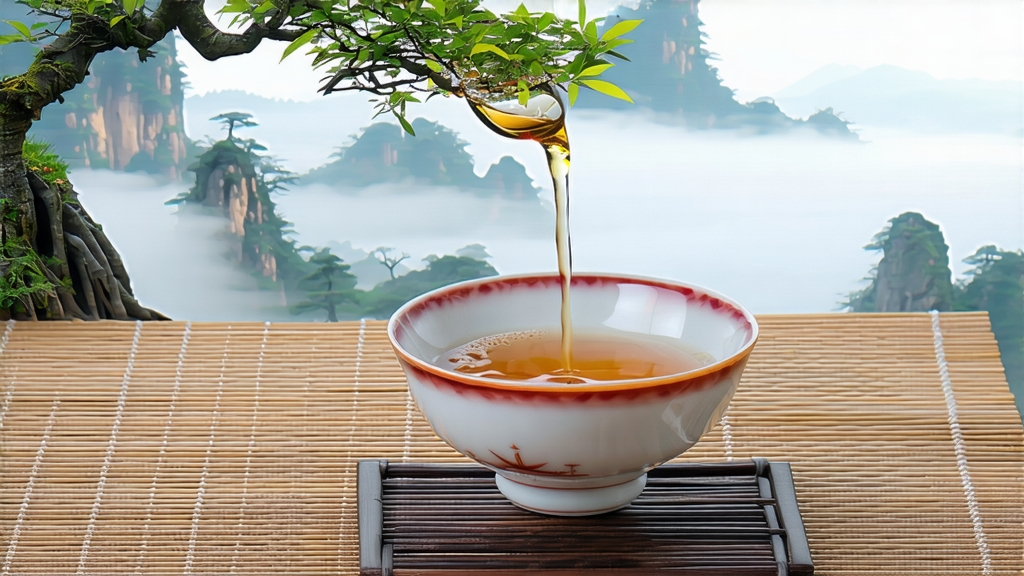
High above the bustle of Chengdu’s plains, where the Min River carves a silver ribbon through Sichuan’s granite spine, lies Meng Ding Mountain, the mist-laden cradle of China’s most discreet yellow tea. Meng Ding Huang Ya—literally “Meng Ding Yellow Bud”—has been whispered about in tea annals since the Tang dynasty, yet it remains an enigma even to many Chinese connoisseurs. Unlike the flamboyant Dragon Well or the assertive Da Hong Pao, this tea survives in a narrow ecological and cultural niche, its production once reserved for emperors, its craft guarded by Buddhist monks who spoke of “borrowing the breath of the mountain.” Today, as global palates search for nuance beyond green and black, Meng Ding Huang Ya is stepping out of the shadows, offering a cup that tastes like early-morning cloud, apricot kernel, and warm bamboo.
History: from altar to throne
The first credible record appears in 808 CE, when the monk Gan Lu (“Sweet Dew”) presented a batch of early-spring buds to Emperor Xianzong. The court chronicler wrote that the liquor was “the color of first-risen sun on palace silk,” and the imperial pharmacy praised its ability to “cool the liver yet warm the spleen.” For the next eleven centuries the tea was levied as tribute; only after the 1911 revolution did the mountain’s monasteries release seedlings to nearby villages. Production collapsed during the 1960s collectivization, when yellowing baskets were melted for steel, and was revived only in 1982 by a small team of agronomists who had salvaved 1.2 kg of heirloom seeds from a sealed stupa. Thus every modern plant traces its lineage to those kernels, making Meng Ding Huang Ya one of the few teas whose genetic pool is publicly documented.
Micro-terroir: why the mountain matters
Meng Ding is actually a series of five summits shrouded in year-round fog; the relative humidity hovers at 88 %, and UV-B radiation is filtered through a 1 200-metre cloud ceiling. The soil is a coarse yellow loam rich in illite clay, which releases potassium slowly and drains vertically—ideal for Camellia sinensis var. sinensis, small-leaf China bush. Night temperatures drop 10 °C below daytime highs, forcing the plant to convert stored starch into soluble sugars and aromatic amino acids such as L-theanine. The result is a bud so plump that locals call it “sparrow’s tongue,” downy yet translucent when held against the light.
Plucking calendar: the 28-day window
Authentic Meng Ding Huang Ya is made only from the first 28 days after Qingming festival. Pickers climb the slopes at 5:30 a.m., while dew still weighs down the mossy paths. Standard is one bud plus one unopened leaf, no longer than 2.5 cm, snapped laterally to avoid crushing the stem. A skilled picker gathers barely 400 g per hour; 45 000 such shoots yield just 500 g of finished tea. Any raindrop on the bud means automatic rejection, because surface moisture would smother the critical yellowing step.
Craft: the art of “men huang” (sealed yellowing)
Although yellow tea is often described as “green tea with an extra step,” the reality is closer to micro-fermentation. The process unfolds in five tightly timed stages:
- Sha Qing (kill-green): 180 °C drum roasting for 3 min 20 s, just enough to denature polyphenol oxidase while preserving a 12 % moisture core.
- Re Nian (hot rolling): the leaves are wrapped in linen and rolled at 65 °C to rupture 30 % of cell walls, releasing amino acids without expressing juice.
- Men Huang (sealed yellowing): the crucial signature. The rolled leaf is piled 8 cm deep inside bamboo steamers lined with wet horse-hair paper. The stack is slid into a pine-wood cabinet maintained at 34 °C and 78 % RH for 48 hours. During this time chlorophyll degrades to pheophytin, catechins dimerize, and a faint Maillard note of toasted rice emerges. Every 12 hours the pile is flipped to prevent anaerobic spots.
- Low-temperature drying: 55 °C for